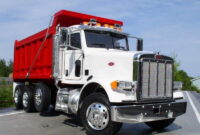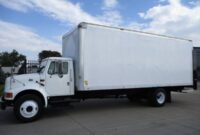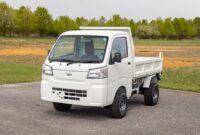Camo Seat Covers For Trucks: The Ultimate Guide to Protection, Style, and Utility pickup.truckstrend.com
Introduction: More Than Just a Pattern
For truck owners, a vehicle is often more than just a mode of transport; it’s a workhorse, an adventure companion, and a personal statement. Every element, from the tires to the interior, contributes to its functionality and appeal. Among the most popular and practical upgrades are camo seat covers for trucks. Far from being a mere fashion statement, these covers offer a robust blend of protection, durability, and a rugged aesthetic that resonates with outdoor enthusiasts, tradespeople, and anyone who values a resilient interior.
Camo Seat Covers For Trucks: The Ultimate Guide to Protection, Style, and Utility
Camo seat covers provide an essential layer of defense against the daily grind – spills, dirt, pet hair, tools, and the relentless sun. They preserve the original upholstery, maintain resale value, and transform the truck’s cabin into a more personalized and utilitarian space. Whether you’re a hunter heading to the woods, a construction worker needing durable protection, or simply someone who loves the distinctive look, understanding the nuances of camo seat covers is key to making an informed decision. This comprehensive guide will delve into every aspect of choosing, installing, and maintaining the perfect camo seat covers for your truck.
Beyond Aesthetics: The Core Benefits of Camo Seat Covers for Trucks
While the distinctive camouflage pattern is often the first thing that catches the eye, the true value of these seat covers lies in their multifaceted benefits:
- Superior Protection: Trucks endure tough conditions. Camo seat covers act as a formidable barrier against everyday wear and tear, including spills from coffee or soda, mud tracked in from boots, pet scratches, UV fading, and general grime. This protection is invaluable for preserving the pristine condition of your original seats.
- Enhanced Durability: Unlike standard upholstery, camo seat covers are typically crafted from heavy-duty, resilient materials designed to withstand abuse. This means they resist tears, punctures, and abrasions, making them ideal for active lifestyles or demanding work environments.
- Concealment and Utility: For hunters, anglers, and outdoor adventurers, camouflage isn’t just a pattern; it’s a functional tool. While seat covers don’t offer true field concealment, they contribute to an overall rugged, outdoor-ready aesthetic that complements your gear and lifestyle. They also prevent light-colored seats from reflecting sunlight, which can be a minor consideration for some.
- Preservation of Resale Value: Keeping your truck’s interior in excellent condition is crucial for maintaining its resale value. Seat covers take the brunt of daily use, ensuring that when it’s time to sell or trade in, your original upholstery remains in top shape.
- Personalization and Style: Camo patterns offer a unique way to customize your truck’s interior, reflecting your passion for the outdoors or a rugged aesthetic. With a wide array of patterns and material options, you can tailor the look to your specific taste.
- Comfort and Hygiene: Many modern seat cover materials offer improved breathability or are easier to clean than factory upholstery, contributing to a more comfortable and hygienic interior environment.

Decoding the Camo Palette: Types of Camouflage Patterns
Camo patterns have evolved significantly, moving beyond simple military designs to include highly specialized, naturalistic options. Choosing the right pattern is a blend of personal preference and functional intent.

-
Traditional Military Camo:
- Woodland: The classic green, brown, black, and tan pattern, often associated with army fatigues. It’s universally recognized and offers a timeless, rugged look.
- Digital (ACU/MARPAT): Composed of small pixelated blocks, these patterns offer a modern, tech-savvy appearance. They are designed to disrupt outlines more effectively at varying distances.
- Desert/Arid: Lighter browns, tans, and sometimes pinkish hues, designed for dry, open environments.
- Urban Camo: Often gray, black, and white, suitable for a more metropolitan, tactical look.

-
Nature-Inspired/Hunting Camo: These patterns are highly detailed and mimic natural environments, popular among hunters and nature enthusiasts.
- Realtree: A leading brand with various patterns like AP (All-Purpose), Max-4 (Waterfowl), Edge, and Xtra. These feature realistic branches, leaves, and shadows, designed to blend into specific terrains.
- Mossy Oak: Another prominent brand, offering patterns such as Break-Up Country, Bottomland, Obsession, and Shadow Grass Blades. Mossy Oak patterns often feature distinct shapes and textures to create depth and realism.
- Brush/Tree Bark: Patterns specifically designed to mimic the texture and color of tree bark or dense brush.
When selecting a pattern, consider your personal style, the primary use of your truck, and any specific outdoor activities you engage in.
Material Matters: Choosing the Right Fabric for Your Camo Seat Covers
The material is paramount to a seat cover’s durability, comfort, and protective qualities. Each fabric type offers distinct advantages:
-
Neoprene:
- Pros: Water-resistant (excellent for spills, sweat, wet gear), comfortable, stretchy for a snug fit, good insulation, available in many colors and patterns.
- Cons: Can be warm in hot climates, may have a rubbery smell initially, less abrasion-resistant than Cordura.
- Ideal For: Boaters, surfers, active individuals, families with kids, those needing spill protection.
-
Cordura / Ballistic Nylon:
- Pros: Extremely durable, highly resistant to abrasion, tears, and punctures, heavy-duty, rugged look, often water-resistant.
- Cons: Can be stiff, less breathable than canvas, may feel rough to the touch.
- Ideal For: Construction workers, off-roaders, those transporting tools or sharp objects, pet owners.
-
Canvas / Duck Weave:
- Pros: Very durable, breathable, rugged and classic appearance, good resistance to wear, can be treated for water resistance.
- Cons: Can be prone to staining if not treated, may feel rough, heavier.
- Ideal For: General heavy-duty use, traditionalists, those prioritizing breathability over extreme water resistance.
-
Poly-Cotton Blends:
- Pros: More comfortable and softer than pure synthetics, breathable, good for everyday use, generally more affordable.
- Cons: Less durable and water-resistant than neoprene or Cordura, may fade over time.
- Ideal For: Everyday commuters, those seeking comfort and basic protection.
-
Leatherette / Vinyl:
- Pros: Easy to clean, water-resistant, offers a sleek look.
- Cons: Less breathable, can be sticky in hot weather, less durable than Cordura for heavy abuse, can crack over time.
- Ideal For: Those prioritizing easy cleaning and a specific aesthetic.
Consider your primary needs: Is it extreme durability, water protection, comfort, or a balance of all three?
Fit for Purpose: Universal vs. Custom-Fit Camo Seat Covers
The fit of your seat covers significantly impacts their appearance, protection, and safety.
-
Custom-Fit Camo Seat Covers:
- Pros: Designed specifically for your truck’s make, model, and year, ensuring a glove-like fit. This means no sagging, bunching, or shifting. They accommodate all seat features (headrests, armrests, lumbar supports, seatbelts, power controls, heated/cooled seats) and, crucially, are engineered for airbag compatibility. They look like original upholstery.
- Cons: Significantly higher cost, longer manufacturing lead times (often made to order), installation can be more involved.
- Ideal For: Those seeking the best protection, OEM look, safety assurance, and long-term investment.
-
Semi-Custom Fit Camo Seat Covers:
- Pros: Offer a better fit than universal covers, designed for a range of similar truck models, often more affordable than custom.
- Cons: May not perfectly accommodate every unique seat feature, airbag compatibility should be verified.
- Ideal For: A good middle-ground option for those wanting better fit without the custom price tag.
-
Universal Fit Camo Seat Covers:
- Pros: Most affordable, widely available, easy to install quickly.
- Cons: Loose and baggy fit, prone to shifting, may cover seat features, rarely airbag compatible (a major safety concern), offer minimal protection against spills or heavy wear due to poor fit.
- Ideal For: Budget-conscious buyers needing very basic, temporary protection, but generally not recommended for long-term use or safety.
Crucial Advice: Always verify airbag compatibility. Side airbags are commonly located in the seats, and an improper seat cover can impede their deployment, leading to serious safety risks. Reputable custom-fit manufacturers will design covers with precise openings or special stitching to ensure airbag functionality.
Installation Made Easy: A Step-by-Step Guide
While custom-fit covers might require a bit more effort, the installation process is generally manageable for most truck owners.
-
Preparation is Key:
- Clean Your Seats: Thoroughly vacuum and wipe down your original seats. Any dirt or debris trapped under the covers can cause premature wear to your upholstery.
- Gather Tools: You might need a trim tool (plastic pry tool), a flashlight, and potentially a helping hand for larger sections.
- Unpack and Identify: Lay out all components. Seat covers typically come labeled for specific parts: front driver/passenger bottoms and backs, headrests, armrests, console covers, and rear seat sections.
-
Start with the Bottom Cushion:
- Slide the bottom cover over the seat cushion. Ensure it’s centered and the seams align with the seat’s contours.
- Reach underneath the seat to pull straps, buckles, or elastic bands through to the back or underside. Connect these securely. You may need to tuck fabric into the seat crease.
-
Move to the Backrest:
- Slide the backrest cover over the seat back. For custom fits, this might involve unbolting seatbelt anchors or removing headrests first.
- Work the cover down evenly, ensuring all corners and edges are snug.
- Secure any straps or Velcro closures that wrap around the back of the seat or connect underneath.
-
Install Headrest and Armrest Covers:
- These are usually straightforward sleeves that slide over the respective components. Ensure any openings for posts or controls are properly aligned.
-
Repeat for All Seats: Follow the same process for the passenger seat and any rear seats. Rear seats may involve lifting or folding sections to access attachment points.
-
Final Adjustments:
- Smooth out any wrinkles or slack. Push down firmly on the covers to help them settle.
- Check all attachment points to ensure they are tight and secure.
- Test seatbelt functionality and ensure no covers impede moving parts.
Tips for a Snug Fit:
- Patience: Don’t rush. A slow, methodical approach yields the best results.
- Warmth: If covers are stiff, let them warm up in the sun or a heated room; this makes them more pliable.
- Leverage: Use your body weight to compress cushions while pulling covers tight.
Maintenance & Longevity: Keeping Your Camo Seat Covers Looking Great
Proper care extends the life and appearance of your camo seat covers.
- Regular Cleaning:
- Vacuuming/Brushing: Regularly vacuum or brush off loose dirt, dust, and pet hair.
- Spot Cleaning: For spills or stains, use a mild soap (like dish soap) mixed with water on a clean cloth. Dab, don’t rub, to lift the stain.
- Deep Cleaning (if applicable): Check manufacturer instructions. Many neoprene and some canvas covers can be machine washed on a gentle cycle with cold water and mild detergent. Always air dry them completely to prevent mildew and shrinkage. Never put them in a dryer.
- Avoid Harsh Chemicals: Do not use bleach, strong detergents, or abrasive cleaners, as these can damage the fabric and cause fading.
- UV Protection: While many quality covers are UV-resistant, prolonged exposure to intense sunlight can still cause fading over years. Consider a windshield sunshade when parked for extended periods.
- Prompt Spill Cleanup: Address spills immediately to prevent them from soaking in and staining.
Key Considerations Before You Buy
Making the right choice for camo seat covers involves several critical factors:
- Budget: Custom-fit covers are a significant investment, while universal options are very affordable. Determine your spending limit, but remember that quality often correlates with price.
- Truck Make, Model, and Year: This is paramount for custom and semi-custom fits. Even minor variations between model years can affect fit.
- Your Lifestyle and Usage:
- Heavy-Duty Work/Tools: Opt for Cordura or heavy canvas.
- Hunting/Fishing/Outdoor Sports: Neoprene for water resistance, Cordura for ruggedness.
- Pets: Durable, easy-to-clean materials like Cordura or neoprene.
- Families/Kids: Water-resistant and easy-to-clean options like neoprene or vinyl.
- Airbag Compatibility: Reiterate this! If your truck has side-impact airbags in the seats, ensure the covers are specifically designed to allow for proper deployment. This is a non-negotiable safety feature.
- Seat Features: Account for heated/cooled seats, power controls, integrated seatbelts, folding seats, armrests, and console configurations. Custom covers will have precise cutouts; universal ones won’t.
- Warranty and Brand Reputation: Choose reputable brands known for quality and customer service. A good warranty provides peace of mind.
- Reviews: Read reviews from other truck owners with similar vehicles to gauge satisfaction with fit, durability, and customer service.
Camo Seat Covers For Trucks: Estimated Price Guide
Pricing for camo seat covers varies significantly based on fit type, material, brand, and included features (e.g., full set vs. front only, console cover, headrest covers). The table below provides estimated ranges for a full set of front and rear seat covers.
| Fit Type | Material Type | Features/Quality Level | Estimated Price Range (USD) | Notes |
|---|---|---|---|---|
| Universal | Poly-Cotton, Basic Neoprene | Basic Protection, Loose Fit | $50 – $150 | Least protective, poor fit, rarely airbag compatible. |
| Semi-Custom | Poly-Cotton, Mid-Grade Neoprene | Better Fit, Some Features | $150 – $350 | Improved fit, often model-specific but not exact. |
| Custom-Fit | Neoprene (Premium) | Tailored Fit, Airbag Ready | $250 – $600 | Excellent water resistance, comfort, snug fit. |
| Custom-Fit | Cordura/Ballistic Nylon | Extreme Durability, Snug Fit | $300 – $700 | Top-tier abrasion resistance, heavy-duty use. |
| Custom-Fit | Canvas (Premium) | Rugged, Breathable, Snug Fit | $280 – $650 | Classic look, good all-around protection. |
| Custom-Fit | Specialty Patterns (Realtree, Mossy Oak) | Premium Materials, Licensed | $400 – $800+ | Higher cost due to licensing and detailed patterns. |
Disclaimer: These prices are estimates only and can fluctuate based on the specific truck model (e.g., crew cab vs. regular cab), brand promotions, retailer, and additional features (e.g., seat heating/cooling compatibility, console covers, extra pockets). Always check current pricing from reputable retailers.
Frequently Asked Questions (FAQ)
Q1: Are camo seat covers hard to install?
A1: Universal covers are typically very easy. Custom-fit covers, while more involved, are usually designed for DIY installation with patience and attention to detail. Most come with instructions and some brands have installation videos.
Q2: Do camo seat covers fit all trucks?
A2: Universal covers claim to fit "most" trucks but rarely fit well. Custom-fit covers are made specifically for your truck’s make, model, and year, ensuring a perfect, snug fit. Always specify your vehicle details when purchasing.
Q3: Are camo seat covers waterproof?
A3: Most are water-resistant, especially those made from neoprene or treated Cordura. Fully waterproof covers are rare and often sacrifice breathability. Water-resistant means they will repel most spills, but prolonged saturation might eventually seep through.
Q4: Can I wash my camo seat covers?
A4: It depends on the material. Neoprene and some canvas covers are often machine washable (cold water, gentle cycle, mild detergent) but must be air-dried. Cordura and other materials might require spot cleaning or professional cleaning. Always follow the manufacturer’s specific care instructions.
Q5: Do seat covers interfere with side airbags?
A5: This is a critical safety concern. Universal seat covers often do not account for side airbags and can impede their deployment. High-quality custom-fit seat covers are specifically engineered with precise cutouts or special break-away stitching to ensure that side airbags can deploy safely. Always verify airbag compatibility before purchasing.
Q6: How long do camo seat covers last?
A6: The lifespan varies greatly depending on the material quality, frequency of use, and how well they are maintained. High-quality custom-fit covers made from durable materials like Cordura or premium neoprene can last 5-10 years or more with proper care. Universal covers will typically have a much shorter lifespan.
Q7: Will the camouflage pattern fade over time?
A7: Quality seat covers use UV-resistant dyes to minimize fading. However, prolonged, intense exposure to direct sunlight will eventually cause some degree of fading over many years, regardless of material. Using a windshield sunshade when parked can help prolong their vibrant appearance.
Conclusion: Investing in Your Truck’s Interior and Lifestyle
Camo seat covers for trucks represent a savvy investment in both the aesthetics and longevity of your vehicle’s interior. They offer unparalleled protection against the rigors of daily life, whether it’s muddy boots, spilled coffee, or the wear and tear of tools and pets. Beyond their practical benefits, they allow truck owners to express their personality and passion for the outdoors, transforming a standard cabin into a personalized, rugged command center.
By understanding the various patterns, materials, and crucial fit considerations—especially airbag compatibility—you can select a product that not only looks great but also provides lasting protection and peace of mind. Choose wisely, install carefully, and maintain diligently, and your camo seat covers will serve as a durable, stylish, and functional upgrade that enhances your truck-owning experience for years to come.


